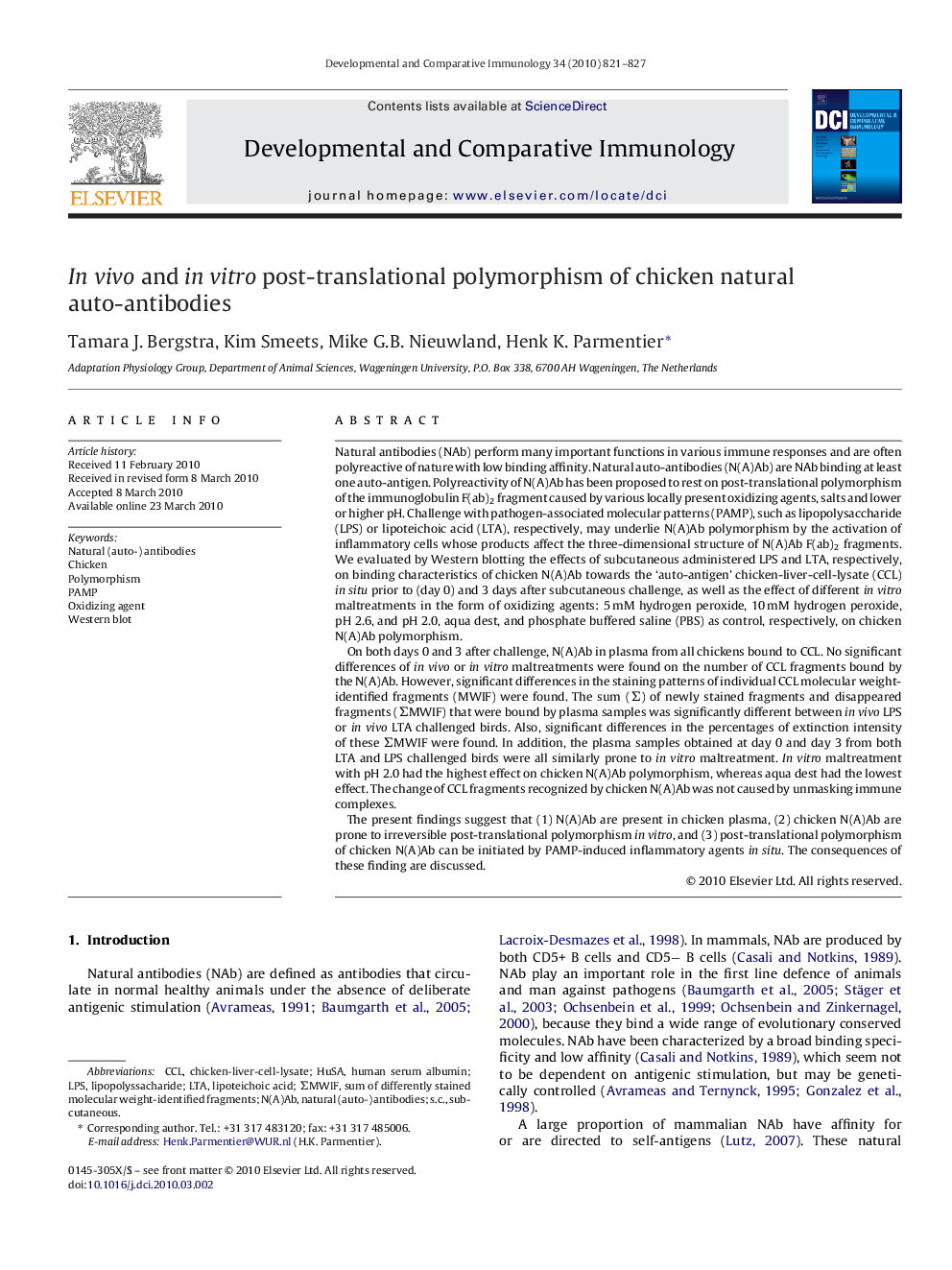| کد مقاله | کد نشریه | سال انتشار | مقاله انگلیسی | نسخه تمام متن |
|---|---|---|---|---|
| 2430087 | 1106541 | 2010 | 7 صفحه PDF | دانلود رایگان |

Natural antibodies (NAb) perform many important functions in various immune responses and are often polyreactive of nature with low binding affinity. Natural auto-antibodies (N(A)Ab) are NAb binding at least one auto-antigen. Polyreactivity of N(A)Ab has been proposed to rest on post-translational polymorphism of the immunoglobulin F(ab)2 fragment caused by various locally present oxidizing agents, salts and lower or higher pH. Challenge with pathogen-associated molecular patterns (PAMP), such as lipopolysaccharide (LPS) or lipoteichoic acid (LTA), respectively, may underlie N(A)Ab polymorphism by the activation of inflammatory cells whose products affect the three-dimensional structure of N(A)Ab F(ab)2 fragments. We evaluated by Western blotting the effects of subcutaneous administered LPS and LTA, respectively, on binding characteristics of chicken N(A)Ab towards the ‘auto-antigen’ chicken-liver-cell-lysate (CCL) in situ prior to (day 0) and 3 days after subcutaneous challenge, as well as the effect of different in vitro maltreatments in the form of oxidizing agents: 5 mM hydrogen peroxide, 10 mM hydrogen peroxide, pH 2.6, and pH 2.0, aqua dest, and phosphate buffered saline (PBS) as control, respectively, on chicken N(A)Ab polymorphism.On both days 0 and 3 after challenge, N(A)Ab in plasma from all chickens bound to CCL. No significant differences of in vivo or in vitro maltreatments were found on the number of CCL fragments bound by the N(A)Ab. However, significant differences in the staining patterns of individual CCL molecular weight-identified fragments (MWIF) were found. The sum (Σ) of newly stained fragments and disappeared fragments (ΣMWIF) that were bound by plasma samples was significantly different between in vivo LPS or in vivo LTA challenged birds. Also, significant differences in the percentages of extinction intensity of these ΣMWIF were found. In addition, the plasma samples obtained at day 0 and day 3 from both LTA and LPS challenged birds were all similarly prone to in vitro maltreatment. In vitro maltreatment with pH 2.0 had the highest effect on chicken N(A)Ab polymorphism, whereas aqua dest had the lowest effect. The change of CCL fragments recognized by chicken N(A)Ab was not caused by unmasking immune complexes.The present findings suggest that (1) N(A)Ab are present in chicken plasma, (2) chicken N(A)Ab are prone to irreversible post-translational polymorphism in vitro, and (3) post-translational polymorphism of chicken N(A)Ab can be initiated by PAMP-induced inflammatory agents in situ. The consequences of these finding are discussed.
Journal: Developmental & Comparative Immunology - Volume 34, Issue 8, August 2010, Pages 821–827